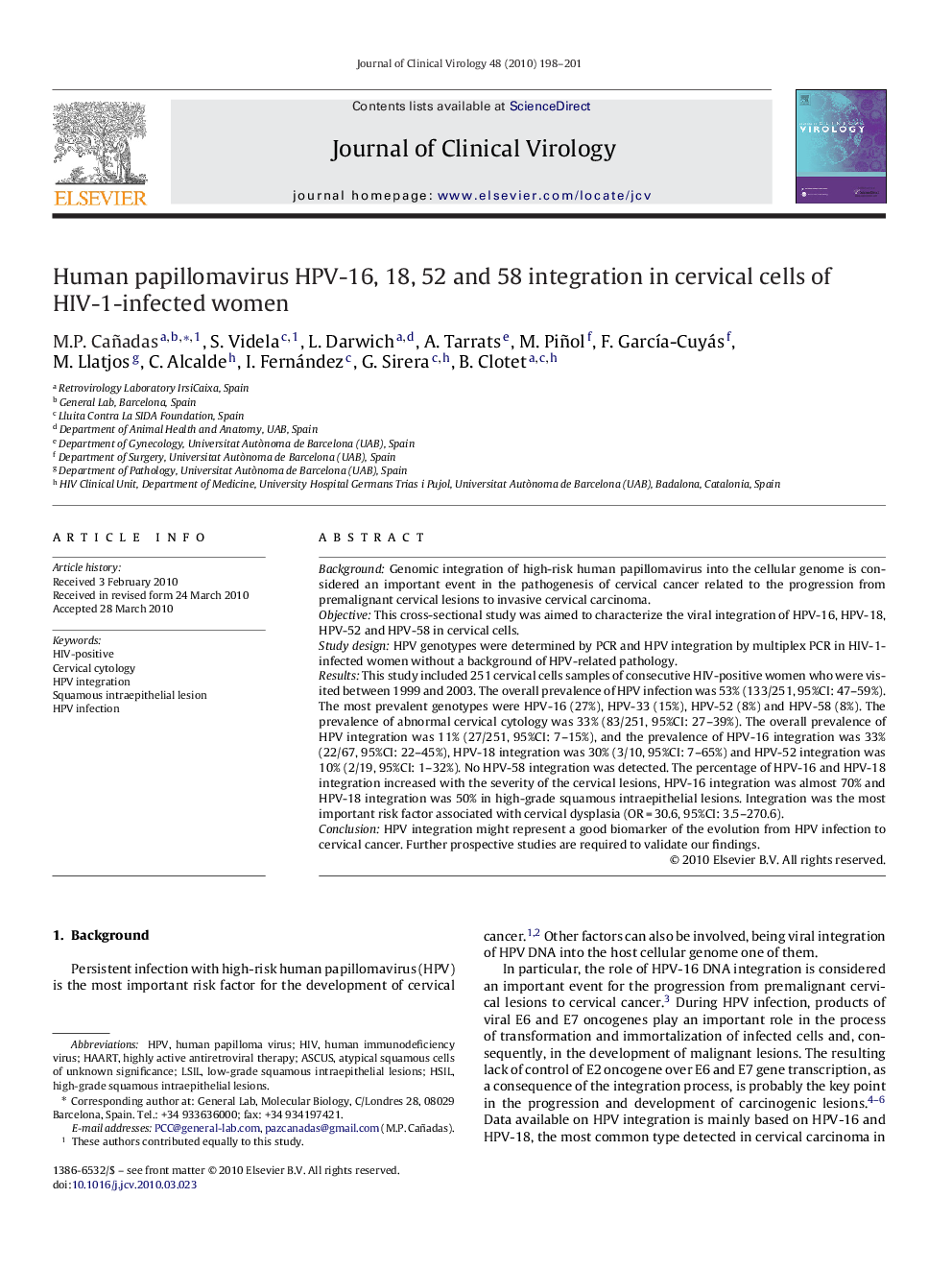| Article ID | Journal | Published Year | Pages | File Type |
|---|---|---|---|---|
| 3369468 | Journal of Clinical Virology | 2010 | 4 Pages |
BackgroundGenomic integration of high-risk human papillomavirus into the cellular genome is considered an important event in the pathogenesis of cervical cancer related to the progression from premalignant cervical lesions to invasive cervical carcinoma.ObjectiveThis cross-sectional study was aimed to characterize the viral integration of HPV-16, HPV-18, HPV-52 and HPV-58 in cervical cells.Study designHPV genotypes were determined by PCR and HPV integration by multiplex PCR in HIV-1-infected women without a background of HPV-related pathology.ResultsThis study included 251 cervical cells samples of consecutive HIV-positive women who were visited between 1999 and 2003. The overall prevalence of HPV infection was 53% (133/251, 95%CI: 47–59%). The most prevalent genotypes were HPV-16 (27%), HPV-33 (15%), HPV-52 (8%) and HPV-58 (8%). The prevalence of abnormal cervical cytology was 33% (83/251, 95%CI: 27–39%). The overall prevalence of HPV integration was 11% (27/251, 95%CI: 7–15%), and the prevalence of HPV-16 integration was 33% (22/67, 95%CI: 22–45%), HPV-18 integration was 30% (3/10, 95%CI: 7–65%) and HPV-52 integration was 10% (2/19, 95%CI: 1–32%). No HPV-58 integration was detected. The percentage of HPV-16 and HPV-18 integration increased with the severity of the cervical lesions, HPV-16 integration was almost 70% and HPV-18 integration was 50% in high-grade squamous intraepithelial lesions. Integration was the most important risk factor associated with cervical dysplasia (OR = 30.6, 95%CI: 3.5–270.6).ConclusionHPV integration might represent a good biomarker of the evolution from HPV infection to cervical cancer. Further prospective studies are required to validate our findings.
